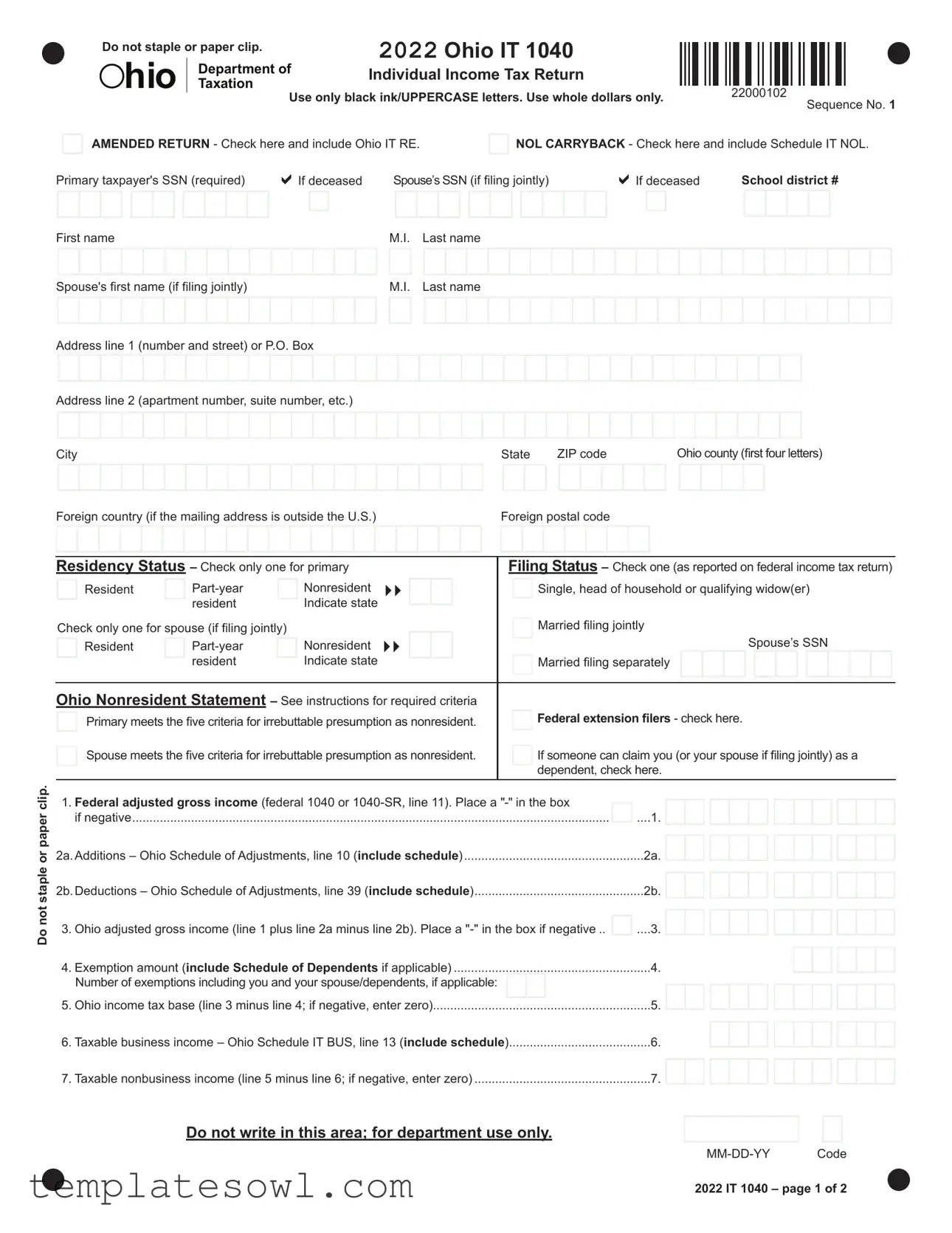Filing taxes can often be a daunting task, and filling out the Ohio IT 1040EZ form is no exception. Many taxpayers make simple yet costly errors that can delay their refunds or lead to complications with the Ohio Department of Taxation. Below are some common mistakes to avoid when completing this important document.
One prevalent mistake is failing to provide all required Social Security Numbers (SSNs), particularly for both the primary taxpayer and their spouse if filing jointly. Each SSN must be entered accurately, as any discrepancies can trigger delays and confusion. It’s essential to double-check that all SSNs are correct and up to date.
Another common issue arises from improper use of ink and letter case. The form specifically states that only black ink and uppercase letters should be used. Using other colors or lowercase letters can lead to issues in scanning and processing the return. Maintaining consistency in writing style is crucial for clarity and efficiency.
Many taxpayers overlook the requirement to avoid stapling or paper clipping their forms. This simple instruction may seem minor, but following it is important for the processing of the return. The Ohio Department of Taxation has automated systems, which cannot handle physical attachments like staples or clips, potentially leading to lost documents.
Miscalculating income or failing to accurately report the total may also occur. This includes neglecting to compute the Ohio adjusted gross income correctly. Ensuring that all additions and deductions are carefully calculated will help avoid complications. Always review the math and consider using a calculator or spreadsheet to verify totals.
A significant number of individuals forget to include necessary schedules, especially when claiming additions or deductions. For instance, if there are any income adjustments, including those from the Ohio Schedule of Adjustments, these must be attached. Not providing supporting documents can delay processing and raise questions about the return.
In addition, taxpayers sometimes incorrectly check the "resident," "part-year," or "nonresident" status. Each filing status has specific criteria, and selecting the wrong one can lead to incorrect tax calculations. It’s essential to review the criteria carefully and choose the option that accurately reflects the taxpayer's residency situation for the year.
Another oversight involves the “number of exemptions” section. Providing an incorrect number could affect the calculation of tax liability. Taxpayers must include themselves, their spouse, and any eligible dependents. Verifying deductions against previous tax returns can help to ensure accuracy.
Lastly, neglecting to sign the form is a critical error. A signature is required to certify that the information provided is truthful and correct. Without this signature, the form may be considered incomplete, which can lead to penalties or delays in processing. Double-checking all parts of the form before submission can minimize these mistakes.
A thorough understanding of these common pitfalls can simplify the filing process. By taking the time to review the form meticulously and adhering to all guidelines, taxpayers can avoid these frequent mistakes and ensure a smooth tax filing experience in Ohio.








 hio
hio

